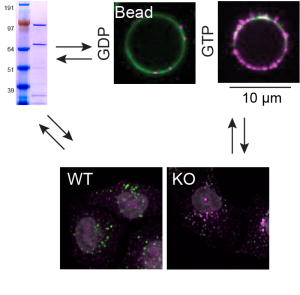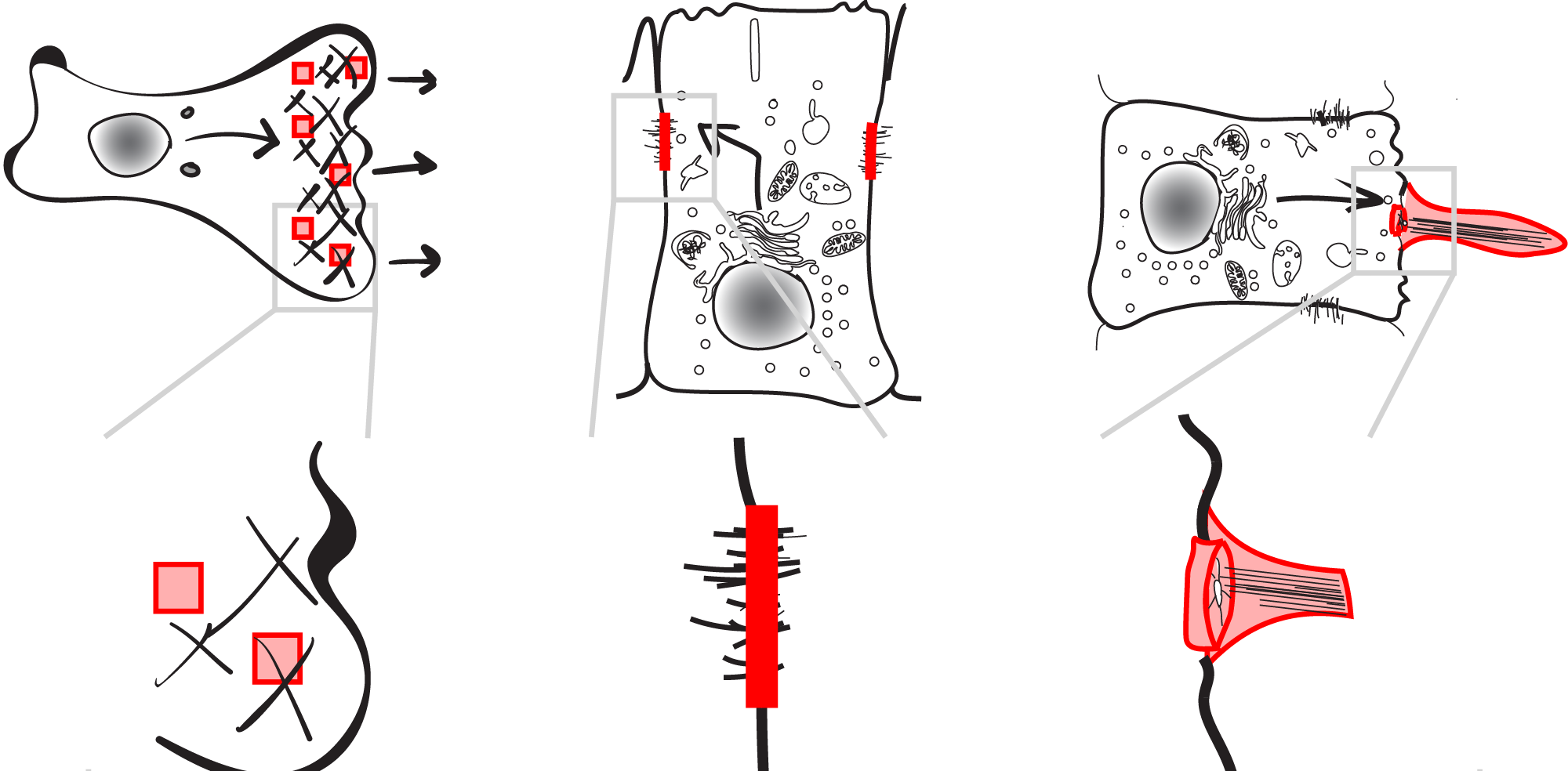A failure to properly build and maintain cellular structures leads to cell-death or disease. Yet, the regulation and mechanisms of the machinery that coordinate such structures are generally poorly understood.

The formation and maintenance of many cellular substructures is dependent on the receipt and retention of specific components, selected through tethering complexes. Of particular interest is the exocyst complex, whose role in polarized trafficking leads in part to the spatially and physically distinct cilia and tight junction membrane substructures. We are curious as to the role of interaction partners, including signaling phospholipids and small GTPases that must likely be involved in tethering. We aim to test hypotheses related to the regulation and signaling at both membranes and their associated proteins. We assert that membranes and combinations of signaling coordinate the polarized trafficking machinery in specialized ways at distinct sites within the cell.

Our approach is fundamentally dependent on membrane biophysical and protein biochemical methods, combined in a synergy with cell biology. The unique tools supported in part by the School of Life Sciences enables a research-driven approach, letting our questions and curiosity drive our projects. The on-site capacity for exciting technologies like automated microscopy and state-of-the-art mass spectrometry additionally enables calculated yet exploratory projects.
We are driven to resolve challenging questions in biology with importance and impact to human health. The imbalances of polarized trafficking in both aberrant development and cancers provide us with a motivation to resolve the molecular mechanics of this pathway.
